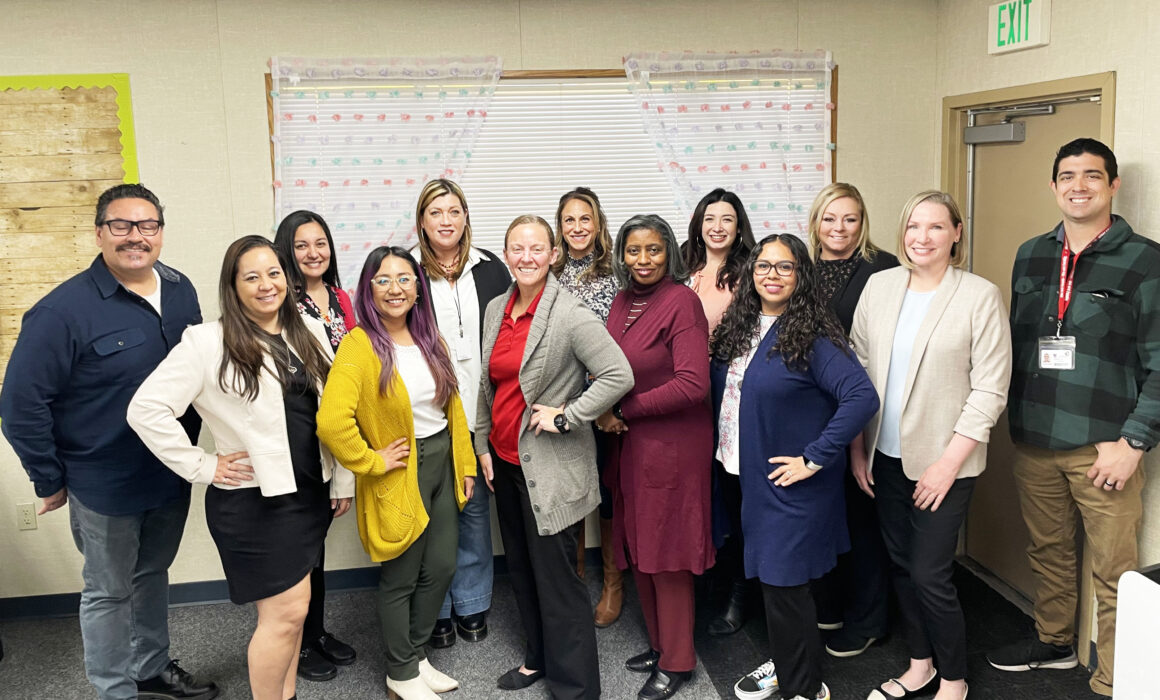
THE COMMUNITY SCHOOLS MOVEMENT in Anaheim is flourishing, in no small part due to the efforts and shared leadership of Anaheim Secondary Teachers Association (ASTA), Anaheim Union High School District, students, parents and community partners.
To date, 16 of 21 middle and high schools in AUHSD, whose students speak almost 50 languages in their homes, have transitioned to community schools. The ASTA/AUHSD “Leading and Learning Days,” which are informational tours and presentations at those schools, have drawn hundreds of educators from across California and nationwide.
While each community school is different because of the unique needs and assets of the communities they serve, they all work through a shared decision-making model, where community school steering committees (CSSC) comprised of multiple stakeholders — educators, district administrators, students, parents, community partners — have equal voice and input.
The Anaheim steering committees (at the district level and school site level) have proved models of collaboration and effective leadership. So much so that in February, ASTA received a $750,000, three-year grant from NEA’s Great Public Schools initiative to establish, in collaboration with the district and other partners, a National Community Schools Learning Lab.
Starting this fall, NCSLL will offer a series of multi-day programs to help teams of stakeholders across the state and the country launch inclusive, functional steering committees. The Lab will also focus on training community school teacher leads, and training on curriculum and instruction that reflect and incorporate the cultures and peoples in the communities at individual school sites.
The goal is to give participating teams the fundamental tools to build strong, shared leadership and governance; connect and forge alliances with families and community partners; recruit and train essential staff; and develop curriculum that is both academically robust and responsive to students’ needs inside and outside the classroom. The result is racially and socially just community schools that support
student success and well-being, where students, families, educators and community partners are engaged and invested in their schools and in their communities.
The NCSLL is also an effort to show chapters and districts that they can use their own resources — as well as resources from NEA and CTA — to build thriving community schools. Some districts have outsourced community schools management to outside agencies, which dilutes the power and efficacy of a steering committee.
“We’ve seen a lot of success in Anaheim. We do have a supportive district — true shared leadership,” said Christie Bettendorf, the Learning Lab coordinator and ASTA member. “We want to steer locals and districts away from outsourcing to give support and structure through the CSSC, which is a more interior and organic leadership model.”
Bettendorf and NCSLL leaders understand that for many locals, shared leadership may not yet be in place, or district buy-in may not be at an optimal level. For example, educators and chapters may be on board with community schools but districts are not, or a district may be using state funds earmarked for community schools on other things, or a district may balk at the release time required to make community schools work. (AUHSD gives teacher leads two periods of release time to collaborate with other teachers and develop curriculum and classroom lessons, and lead their site team that includes admin, parents, students and community partners.)
The Learning Lab will demonstrate to administrators how teacher lead release time is integral to community schools’ success. And while participant teams will ideally be composed of all stakeholders, teams that have not yet formed collaborative relationships are also welcome. The Lab, Bettendorf said, “can empower associations with strategies and structures” to overcome all these barriers.
Learning Lab details
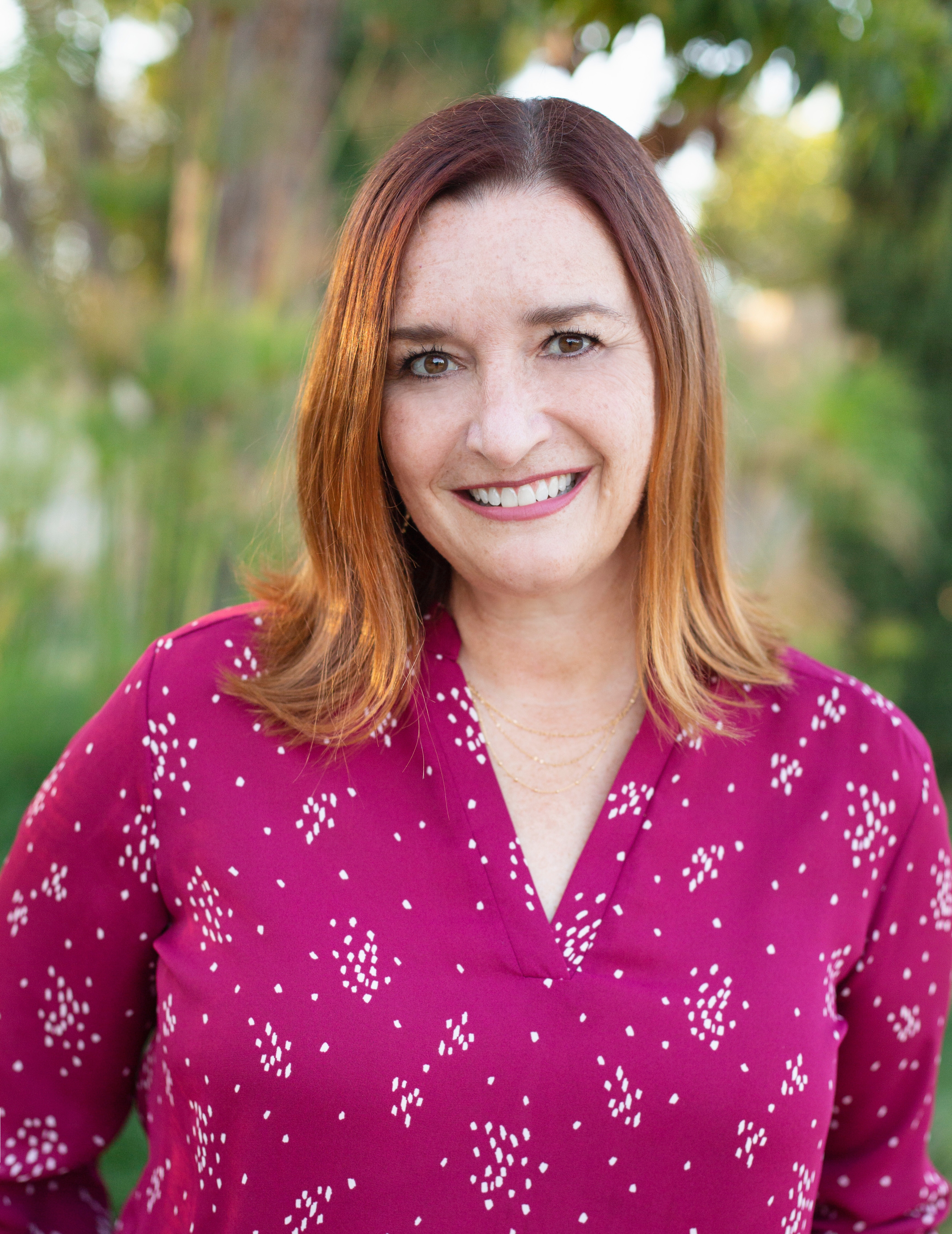
Learning Lab Coordinator and high school teacher Christie Bettendorf.
The NCSLL will draw from ASTA/AUHSD’s expertise and experience with community schools, specifically in implementing steering committees, recruiting and training teacher leads, creating resources and professional development opportunities for educators, and collaborating with external partners including educational experts, community organizations and more. This also includes strategic planning, such as setting clear goals, timelines and performance metrics, and identifying potential challenges and solutions.
Bettendorf and her colleagues are currently refining the Learning Lab program; it may include:
• A pre-visit virtual meeting to assess participants’ needs and assets and review Learning Lab objectives;
• Day 1 (in-person): Leading and Learning Day, an immersive experience that includes a community learning tour, visits with community
partners, classroom observation, best practices for designing and implementing community schools, and a focus on addressing the root causes of educational inequities;
• Day 2 (in-person): Participants
– learn and discuss steering committee structure, the process and procedures of consensus building and shared leadership, and subcommittee structure;
– review the CTA Community Schools 5-Step Toolkit and the NEA 5 Steps to Kickstarting Community Schools;
– discuss the role of teacher leads and best practices for classroom instruction;
– develop a plan to create and sustain a CSSC;
– receive guidance in organizing around community schools.
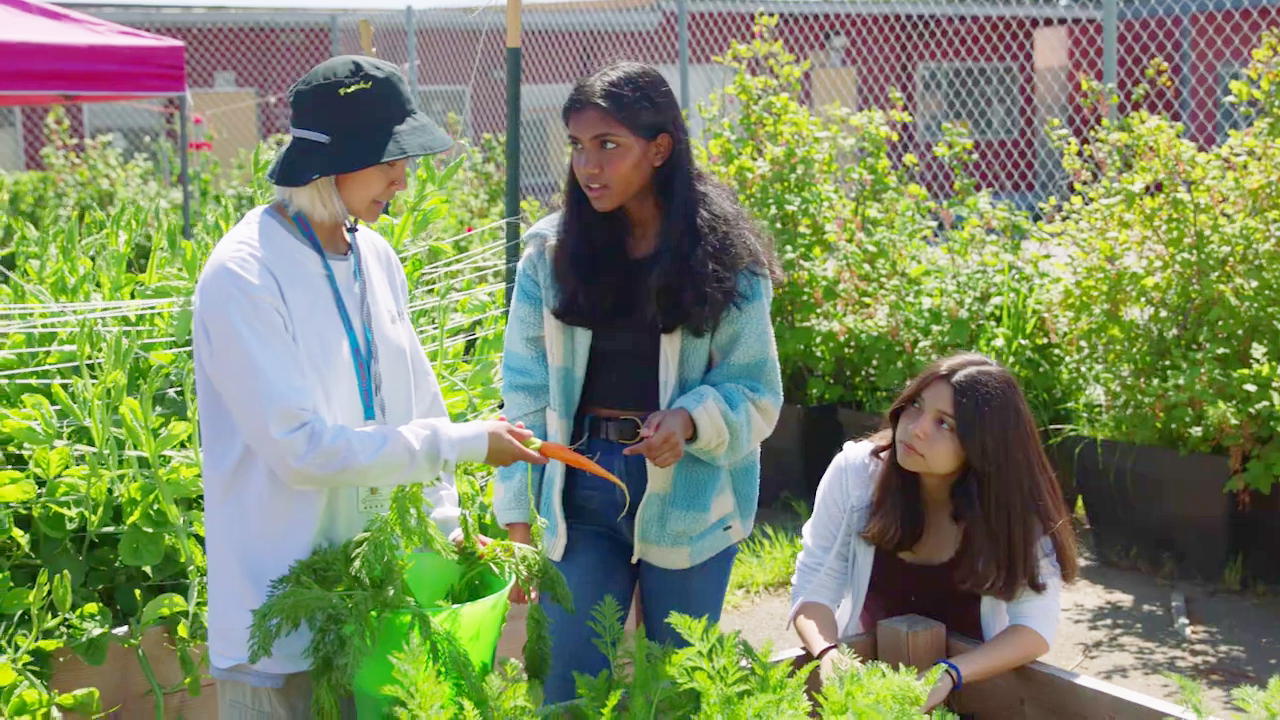
A lesson in the community garden at Anaheim’s Magnolia High School.
Learning Lab leaders will work with NEA and CTA on participant follow-up and support, in person and virtually. Participants who receive teacher lead training will be expected to train colleagues back at their district schools, with help and resources: “We have a training for teacher leads that we already use — we will provide that,” said Bettendorf.
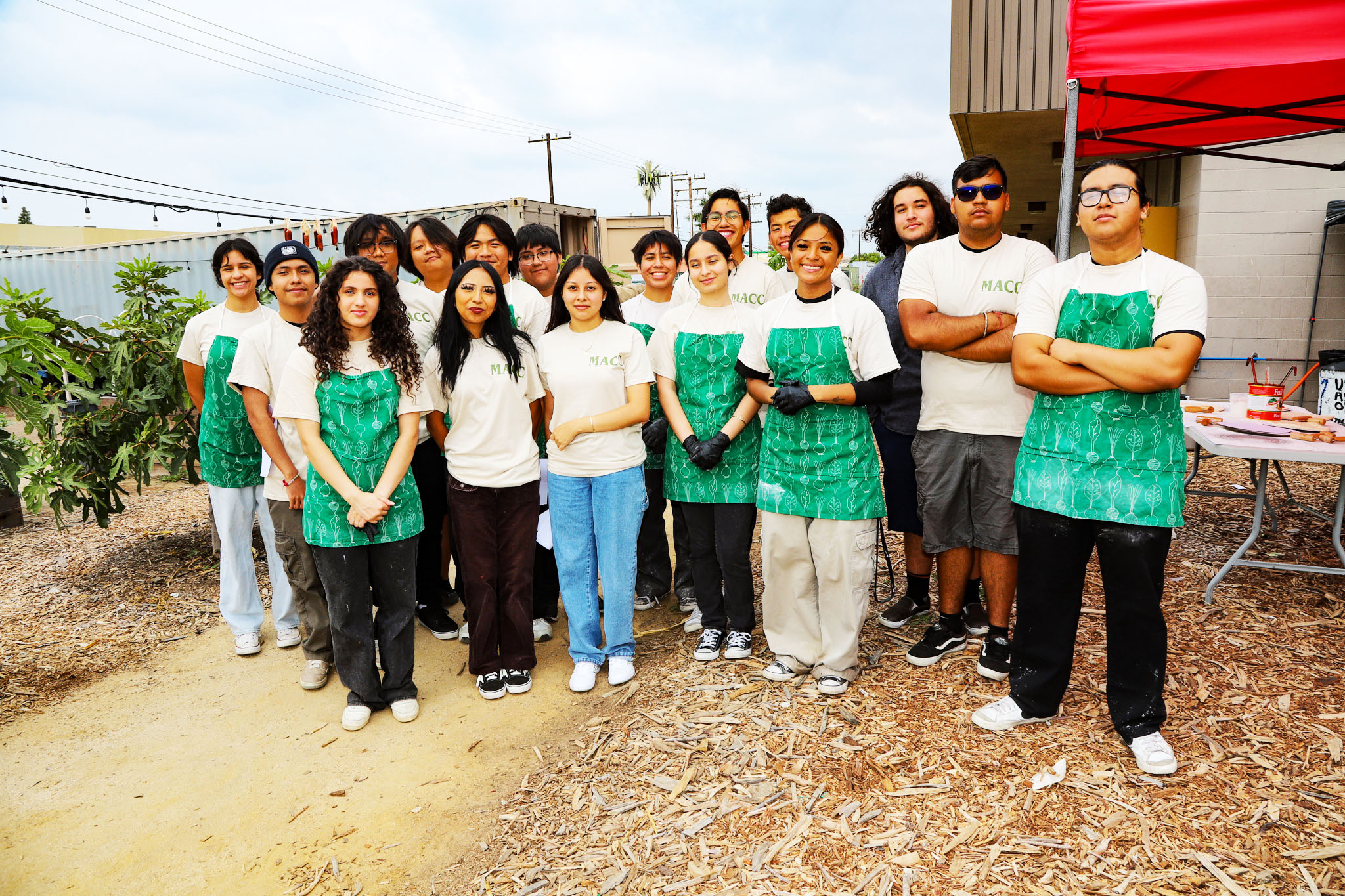
Students at Magnolia High’s Agriscience Community Center after preparing a community dinner.
The NCSLL will serve as an entry point into the NEA Implementation Institute for Community Schools, which supports participants through monthly professional learning community meetings, customized trainings, coaching for local district and site teams, and access to a step-by-step guide to developing community schools. Ideally, participants would attend the Learning Lab before applying for the Institute.
Learning Lab attendees must pay for travel and lodging. The Lab will cover the cost of the Leading and Learning Day, materials and meals.
Interested in the Learning Lab? Email astacslab@gmail.com.
CTA and Community Schools
CTA is deeply committed to growing and supporting community schools. Community schools’ democratic model of shared decision-making ensures all students’ needs are addressed so they can thrive and helps build power with community that leads to a more equitable society.
Community schools have been shown to improve student outcomes, including in attendance, academic achievement, high school graduation rates, and reduced racial and economic achievement gaps.
California has made a historic $4.1 billion investment in community schools and CTA, in partnership with the state, school districts, students, families and communities, is working to help create new community schools and transition traditional schools. Read more of our coverage of CTA and members’ work, and find information and resources, at cta.org/communityschools.
IFT Grants for Community Schools Programs
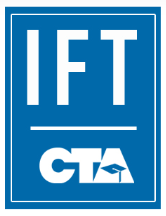 START THINKING BIG about grants available from CTA’s Institute for Teaching. While the 2025 grant application period won’t open until December, members with program and project ideas that could be a part of Community Schools’ work should know that IFT grants may apply.
START THINKING BIG about grants available from CTA’s Institute for Teaching. While the 2025 grant application period won’t open until December, members with program and project ideas that could be a part of Community Schools’ work should know that IFT grants may apply.
IFT offers competitive grants for projects and initiatives that foster change that is teacher-driven and strength-based — the latter meaning what is working and successful in schools and classrooms. IFT awards two types of grants:
• Educator Grant, up to $5,000, implemented by an individual educator and impacting a classroom or single group of students at a school site;
• Impact Grant, up to $20,000, implemented by a team of two or more educators and impacting classrooms or sites within a school district.
IFT grants can be used in Community Schools work if projects meet grant program criteria and fit within program parameters. For example, a network of educators has been working with immigrants and students and families of color for several years on restorative and transformative justice/practices. The educators realized that an IFT grant would allow for expansion of the work at Community Schools where some are based.
“This was an opportunity to get funding for stuff that we were not able to get through the Community Schools grant for our first year, such as food, stipends and field trips,” says UTLA/NEA member German Gurrola, community schools coordinator at Valley Oaks Center for Enriched Studies.
The group received an IFT Impact Grant of $17,400 for its Transformative Justice Leadership Program. The shared governance committees at the LA Unified School District and individual sites agreed that the program was important and supported the application.
The project expands student leadership at four LAUSD Community Schools sites. Components include healing dialogue circles, arts workshops facilitated by community artists, and an after-school program that develops leadership and community organizing skills.
For more information, visit cta.org/ift.
The Discussion 0 comments Post a Comment